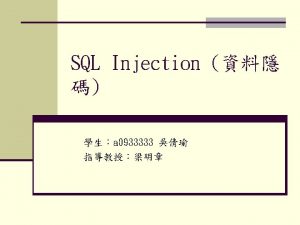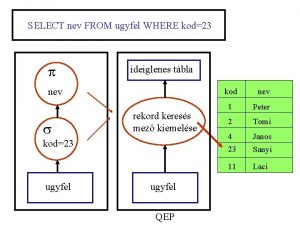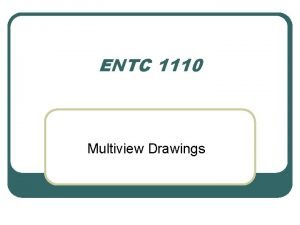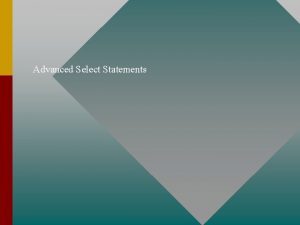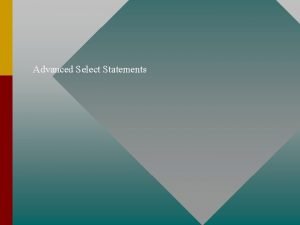Views Views are named SELECT statements id name







- Slides: 7

Views

Views are named SELECT statements id name students 1 Josh 2 Tyler log student_id time_inserted 1 12: 40: 00 2 14: 37: 34 CREATE VIEW name_and_time AS SELECT students. name, log. time_inserted FROM students INNER JOIN log ON students. id = log. student_id; name time_inserted name_and_time Josh 12: 40: 00 Tyler 14: 37: 34

Views A view is a virtual table composed of the result-set of a select statement. A view has rows and columns (just like a table), but instead of holding data it itself, it just points to data held in other tables. You can treat a view like a table and do select statements on it, ◦ But views cannot be modified (no insert, update or delete) You can use a view like a temporary table. You can build the view from multple other tables with joins and/or filter certain rows with WHERE and so on. If the view's SELECT statement changes (modifications where made to the SELECT's underlying tables), the view automatically changes too.

View Example CREATE VIEW artist_and_albums AS SELECT Artist. Name, Album. Title, Album. Id FROM Artist INNER JOIN Album ON Artist. Id = Album. Artist. Id; CREATE VIEW good_artists_and_albums AS SELECT * FROM artist_and_album WHERE NOT Name LIKE '%Kanye%'; CREATE VIEW good_tracks AS SELECT Tracks. * FROM Tracks INNER JOIN good_artists_and_albums ON Tracks. Album. Id = good_artists_and_albums. Album. Id;

When should you use views? 1. When you want a read-only table made from data in other tables. 2. To hide data complexity (for instance, complicated joins). 3. Customizing the data, using functions and group by, to present the data in a new form. However, views are as slow as the query that creates them. And, views of views are even slower as they are basically nested SELECT subqueries.

View Lifespan A view lives only as long as the tables in its select statement. ◦ If the tables in the select statement are dropped, the view is also dropped. You can use the TEMPORARY keyword to indicate that the view should automatically be dropped when the current database connection is closed (meaning the view isn't persistent across connections). CREATE TEMPORARY VIEW something AS SELECT * FROM students; You can also remove a view manually with DROP VIEW: DROP VIEW something;

Views and Triggers You can attach a trigger to a view just like a table. However, you can't use BEFORE or AFTER triggers because they would never activate ◦ You can't modify a view But, you can use INSTEAD OF triggers. ◦ This is often done to make views look mutable like tables CREATE TRIGGER update_on_cool_tracks INSTEAD OF UPDATE ON cool_tracks BEGIN UPDATE Tracks SET Name = NEW. Name WHERE Tracks. Track. Id = NEW. Track. Id; END;


